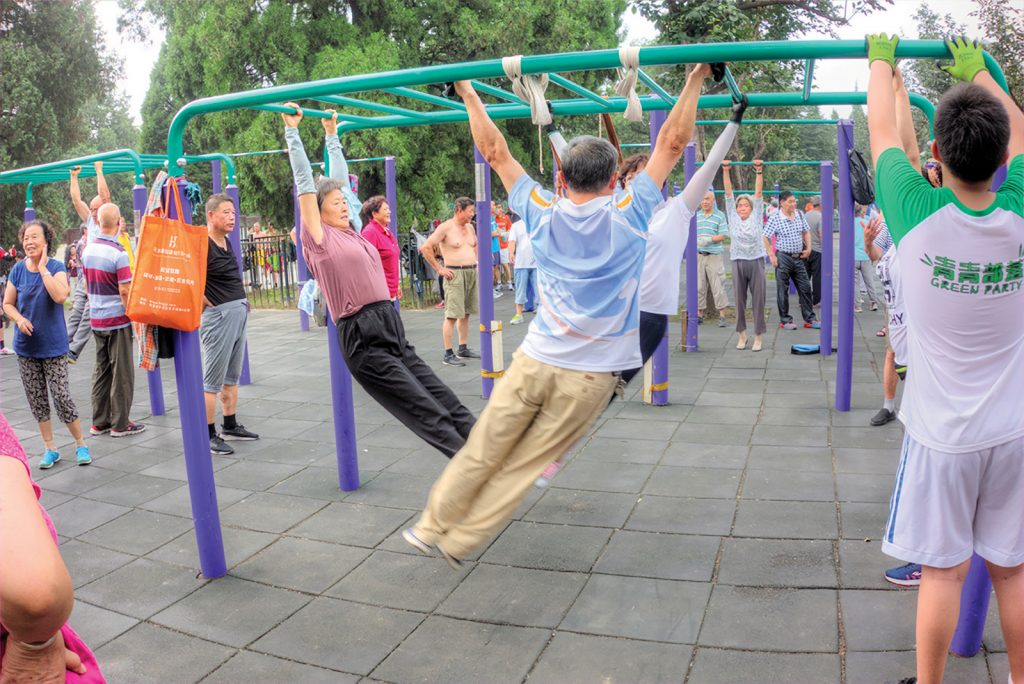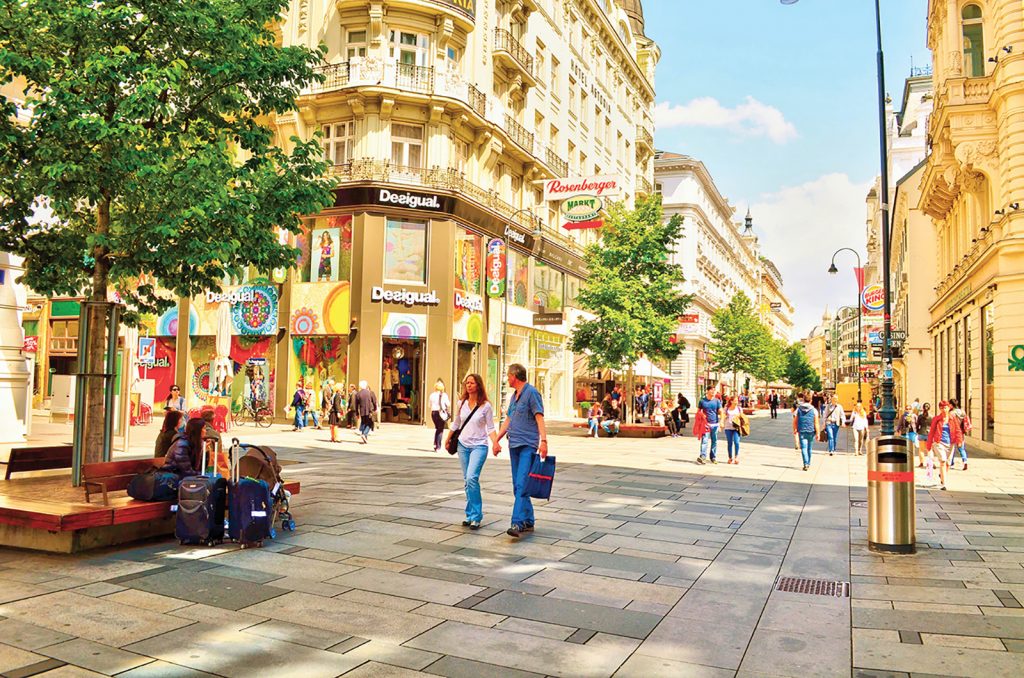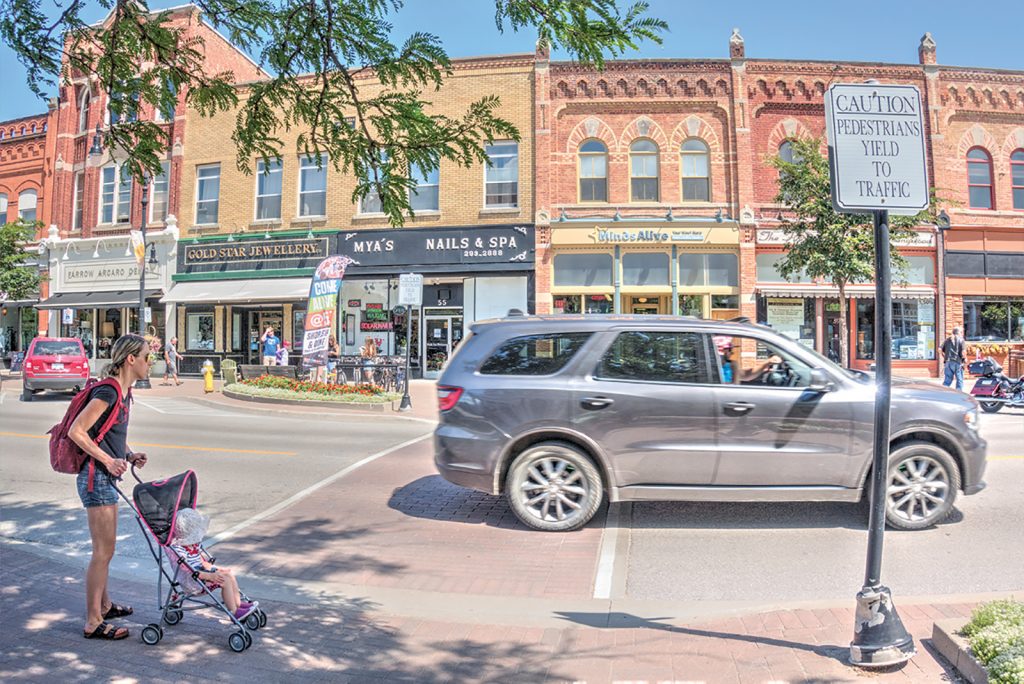Learning from cities like Copenhagen, Oslo and Vienna
by Mark Wessel
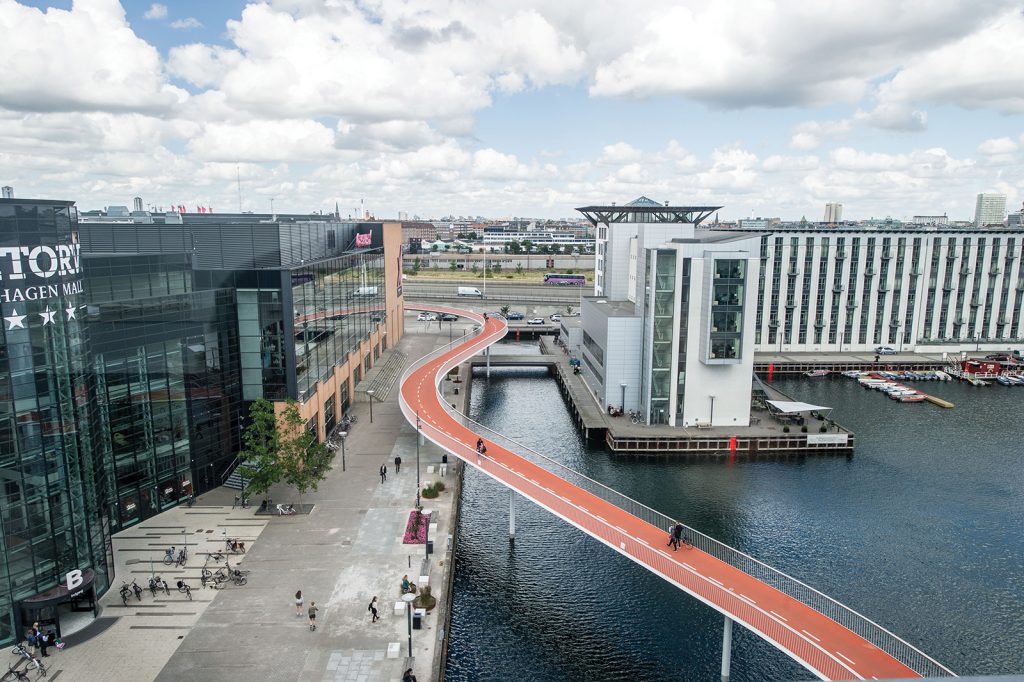
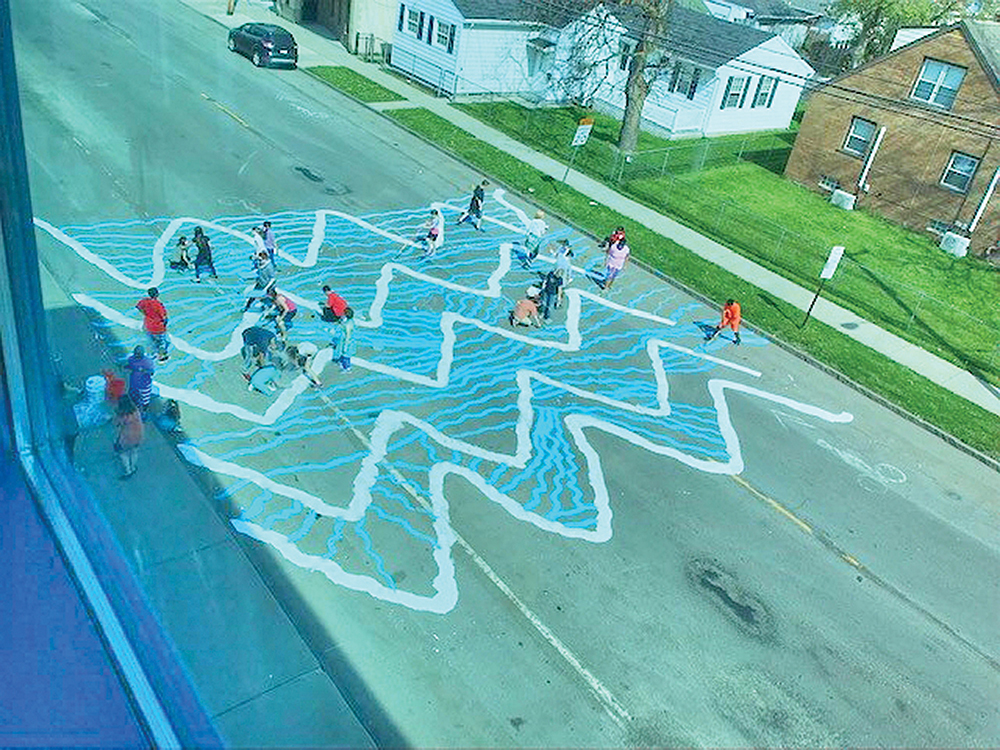
The Bicycle Snake in Copenhagen, Denmark (above) transports cyclists across the harbour. Once down at ground level, the bridge connects with Bryggebroen, another bike bridge that enables cyclists to safely get from one side of the city to another. Left, a creative crosswalk near a Niagara Falls, New York school.
They say you never forget how to ride a bike. To this I would add, you never forget what it’s like to ride a bike in a place like Copenhagen, Denmark, after you’ve experienced it for the first time.
Picture a vast, interconnected network of bike paths, much of it not only protected, but elevated, using parked cars as a buffer between the vehicular traffic and the bikes. There’s a traffic signal system specifically for bikes, giving them an advance green over cars instead of the other way around. There are overpasses for bikes and pedestrians where cars aren’t even allowed, and bike highways that connect with public transit to get residents living in outlying areas into the city, including trains, buses and subway cars that allow you to bring your bike on board.
What Copenhagen and other bike- and pedestrian-friendly capitals such as Utrecht, Holland have accomplished is a source of inspiration for communities around the world, tied to such benefits as a healthier, happier lifestyle, cleaner air and often because of these things, lower healthcare costs.
What those cities have achieved isn’t easy to replicate. But if there’s one thing I’ve discovered over the past five years writing about sustainability, including dozens of learning tours that have taken me from Buffalo to Beijing, it’s that with the right combination of vision, creativity and local support, it’s quite possible to introduce a whole host of locally tailored initiatives designed to make communities more liveable. And many of these initiatives are surprisingly affordable.
For instance, the GTA and Copenhagen couldn’t be further apart when it comes to having a bike-friendly city, but encouragingly, a couple of years ago the two-kilometre Bloor Street Bike Lane pilot project, using cost-effective bollards as a barrier, was made permanent by city council. And now, there is a big push for more protected lanes along major arteries throughout the city.
Tied to the growing concern over road safety, in Niagara Falls, New York, schools have taken matters into their own hands, leveraging the skills of art students to create painted crosswalks … a mashup of street art and crossing areas designed to encourage motorists to slow down.
Making cities more pedestrian and bike friendly isn’t just about safety, but equally important, such initiatives make cities more liveable. Which helps to explain why Oslo, Norway, is working to significantly reduce the number of cars in its downtown core, closing selected roads to traffic altogether while reducing some four-lane roads to two lanes and even single lanes, and widening sidewalks in order to accommodate more parkettes, sitting areas and patios.
While not on the same scale, Vienna, Austria, has closed the centre of its main shopping district to traffic, allowing only delivery vehicles. As you walk down the street, the first thing you notice is that every 25-50 metres, there are clusters of seating areas, shade trees, attractive waste bins and water fountains.
With over 1,200 water fountains, Zurich, Switzerland, is arguably the water capital of the world, because in the face of global warming and with it, long hot summers, the city views access to water as not just a luxury, but a basic necessity. As such, it’s not unusual to see most residents walking around with refillable water containers. Even the public fountains are a source of drinking water.
Ready access to green space and playgrounds is another essential ingredient in the quality of living mix, and while for the most part Southern Georgian Bay has an abundance of the latter, we could still learn from places like Beijing, China, where in the midst of the city’s Temple of Heaven public park, the city has created a huge outdoor gym that includes dozens of pieces of calisthenics equipment and attracts hundreds of participants each day. Much of this avid participation is about mindset. The citizens drawn to Beijing’s exercise area would much sooner work out in the outdoors and enjoy the fellowship of their neighbours, without having to pay for a gym membership.
In Antwerp, Belgium, they take access to parks and playground so seriously that they actually map neighbourhoods and identify those parts of the city deemed to have public space deficits. And based on the accepted standard that every child should be within 500 metres of a park or playground, in parts of the city where this criterion isn’t being met, local officials do their best to source nearby land (whether public or private) which can then be converted into either pop-up or permanent parks to address this shortcoming.
Much closer to home, the Toronto Tool Library is a source of inspiration that also contributes to quality of living for families when it comes to making tools available for all … not just workshop tools, but yard equipment, camping gear and children’s toys. Initially, the thought process behind the tool library was to cater to families that lacked either the financial resources or space to purchase a bevy of power tools. But increasingly, families of all income levels are becoming members, based on the reality that even if you can afford to own and store all kinds of equipment, the reality is that for the vast majority of us, those tools are sitting unused most of the time. So why not just rent, rather than purchase what you need?
Top, the Temple of Heaven public park in Beijing, China includes playgrounds, exercise and game areas. A “walking zone” in Vienna, Austria (middle) gives pedestrians the right of way, contrasted with a crosswalk in Collingwood (bottom), which requires pedestrians to yield to cars.
In places like the Netherlands, they’ve begun applying this concept of sharing ‘stuff’ one step further, through a growing number of car share programs, where vehicles are collectively owned and shared between multiple families or shared through a rental company. There are even some instances where city fleets of cars and trucks are being shared with local families, tied to reducing the fleet costs of local governments. Not unlike tool libraries, the mindset with cars is the same: why pay to own a vehicle that’s parked 95 per cent of the time?
Here in Southern Georgian Bay, there are promising signs of similar initiatives tied to creating more liveable communities. Not unlike Vienna, Midland has done a good job of ensuring there are an abundance of downtown seating areas, shade trees and attractive, readily accessible trash bins to encourage cleaner streets. But like most downtowns in Southern Georgian Bay, Midland would greatly benefit residents and visitors alike with more crosswalks and public drinking fountains.
While nowhere near the same scale as Beijing, the Penetanguishene Rotary Champlain Wendat Park has a respectable collection of outdoor calisthenics equipment. The town just needs to encourage more people to take advantage of this amenity, and better still, encourage groups to organize activities around the use of this equipment, making the location more of a social gathering place in the process.
To their credit, communities like Collingwood have wider sidewalk areas along Hurontario Street, but unlike the similar-sized town of Paris, Ontario – where drivers must stop for pedestrians on main street crossings – in Collingwood, even in front of city hall, the signs mandate that pedestrians stop for cars. And with the town’s current diagonal parking system, bikes aren’t even allowed (unless you walk them).
When it comes to making our communities more sustainable and improving quality of life, these examples are just a fraction of the possibilities that await, tied to making our downtown cores more inviting and reducing social inequalities, while improving access to and abundance of everything from the arts and public art, to parks and playgrounds.
There are no easy solutions. But we can at least begin to move toward creating a more liveable area by learning from other communities, whether ‘just down the road’ in Toronto or Niagara Falls, or ‘across the pond’ in places like Copenhagen, Oslo or Vienna. ❧






